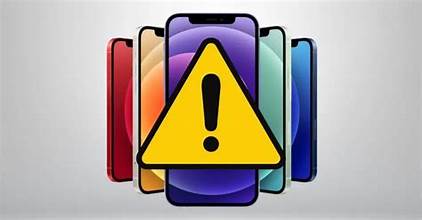🚨 Are Your Apple Devices Under Attack? A critical zero-day vulnerability (CVE-2025-24085) is targeting iPhones, iPads, Macs, and more! Hackers are exploiting a flaw in Apple’s Core Media framework, allowing them to take control of your device—no clicks, no warnings!
This isn’t just another bug; it’s a zero-click nightmare that puts your sensitive data and privacy at risk. Learn how this exploit works, which devices are vulnerable, and the urgent steps you need to take to stay protected.
🔒 Don’t wait—update your Apple devices now! Dive into our latest blog to uncover all the details and keep your devices safe from this growing threat. Your security is in your hands!
🛡️ Read the full guide now and stay one step ahead of hackers.

Introduction
In the world of cybersecurity, zero-day vulnerabilities are among the most dangerous. They exploit unknown flaws in software, leaving millions of users exposed. CVE-2025-24085, a critical zero-day vulnerability in Apple’s Core Media framework, has taken the spotlight, putting iPhones, iPads, Macs, Apple TVs, and even Apple Watches at risk.
This blog unpacks everything you need to know about this vulnerability, how it works, who’s affected, and most importantly, how to protect your devices from this active threat.
What is CVE-2025-24085 in Apple?
CVE-2025-24085 is a use-after-free vulnerability in Apple’s Core Media component. This flaw allows a malicious app or file to exploit memory corruption, granting attackers unauthorized privileges. If successfully exploited, this could lead to full device compromise, putting user data, credentials, and privacy at significant risk.
How Does it Work?
- Use-After-Free Bug:
When a program tries to access memory that has already been deallocated, it creates a loophole that attackers can manipulate. - Core Media Attack Surface:
Core Media is used to process audio and video data, making it a high-risk target. Attackers can craft malicious apps or media files that trigger this flaw when processed. - Privilege Escalation:
Exploiting the vulnerability enables attackers to bypass Apple’s built-in security measures, giving them control over the device.
Apple Devices and Software Affected
Apple confirmed that devices running older versions of its software—prior to the latest updates—are vulnerable to this exploit.
Affected Devices and Versions:
- iOS 18.3 / iPadOS 18.3:
iPhone XS and later, iPads (Pro, Air, mini). - macOS Sequoia 15.3:
Macs running macOS Sequoia. - tvOS 18.3:
Apple TV HD and 4K models. - visionOS 2.3:
Apple Vision Pro. - watchOS 11.3:
Apple Watch Series 6 and later.
Why is This Vulnerability Critical?
- Zero-Click Threat:
The exploit doesn’t require user interaction, making it harder to detect and prevent. A malicious app or media file can activate the vulnerability without your knowledge. - Active Exploitation:
Apple has confirmed that this vulnerability is being actively exploited in the wild, particularly on devices running iOS versions prior to 17.2. - Wide Attack Surface:
The range of affected devices—from iPhones to Apple TVs—makes this a large-scale security concern. - Data and Privacy Risks:
Once exploited, attackers can potentially gain access to sensitive user data, install malware, or spy on user activity.
What Should You Do?
Apple has responded quickly by releasing critical updates for all affected devices. Here’s how to stay protected:
1. Update Your Devices Immediately:
Install the latest patches:
- iOS/iPadOS 18.3
- macOS Sequoia 15.3
- tvOS 18.3
- watchOS 11.3
- visionOS 2.3
2. Enable Automatic Updates:
To ensure you don’t miss future critical updates, turn on automatic updates for all Apple devices.
3. Avoid Untrusted Apps and Files:
Only download apps from the official App Store and avoid opening suspicious media files.
4. Monitor Device Behavior:
Watch for unusual device activity, such as overheating, battery drain, or unauthorized app installations.
Real-World Context: Apple and Zero-Day Exploits
A Look Back at Previous Attacks:
- FORCEDENTRY (CVE-2021-30860):
- Exploited a vulnerability in Apple’s image rendering library to deliver spyware.
- Used by Pegasus spyware to target high-profile individuals.
- CVE-2022-22674 and CVE-2022-22675:
- Targeted Apple’s WebKit and GPU driver, leading to remote code execution.
These incidents underscore the importance of patching vulnerabilities as soon as they are discovered.
Emerging Trends in Zero-Day Exploits
- Increased Focus on Mobile Devices:
With smartphones becoming essential tools for personal and professional use, they are prime targets for zero-day exploits. - Zero-Click Attacks on the Rise:
Sophisticated attacks now require no user interaction, making them harder to detect and mitigate. - AI and Malware Development:
Hackers are leveraging AI to craft more advanced and targeted zero-day attacks.
Resources and References
- Apple Security Updates
https://support.apple.com/en-us/HT201222 - National Vulnerability Database (NVD)
https://nvd.nist.gov/ - Core Media Overview – Apple Developer
https://developer.apple.com/documentation/coremedia
Conclusion
CVE-2025-24085 is a stark reminder of the ever-present cybersecurity risks we face in our digital lives. While Apple’s swift response is commendable, it’s up to users to ensure their devices are protected by staying updated and practicing good cybersecurity hygiene.
💬 What’s Your Take?
Have you updated your Apple devices yet? Let us know your thoughts or concerns in the comments below!
Table of Contents
More
- Zero-Click Nightmare: Samsung Devices at Risk from CVE-2024-49415 Exploit
- Deepfake AI in 2025: What You Need to Know to Stay Safe
- IoT Security Demystified : Why Your Smart Devices Could Be Hackers’ Next Target 25
- CVE Explored: Understanding Common Vulnerabilities and Exposures for Better Cybersecurity 24
- Cyberattack on Japanese Airlines: How Hackers Grounded Japan’s Skies! 2024
- Shocking Chrome Extension Scandal: 600,000 Users’ Data Exposed in Massive Breach!
- AI-Driven Cyber Threats: Understanding and Mitigating the Risks of Artificial Intelligence in Cybersecurity
- Quantum-Resistant Cryptography: Protecting Data in the Age of Quantum Computing 15
- Multi-Factor Authentication (MFA): Strengthening Security with Layers of Protection 14
- Zed Attack Proxy (ZAP): A Hacker’s Best Friend 13
- What is an IDOR Attack? A Beginner’s Guide to Insecure Direct Object References 12
- VAPT Demystified: A Complete Guide to Vulnerability Assessment & Penetration Testing 10
- Hackers Playbook: 15 Common Cyber attack Techniques
- 9 Career Job in Cybersecurity : A Comprehensive Guide




